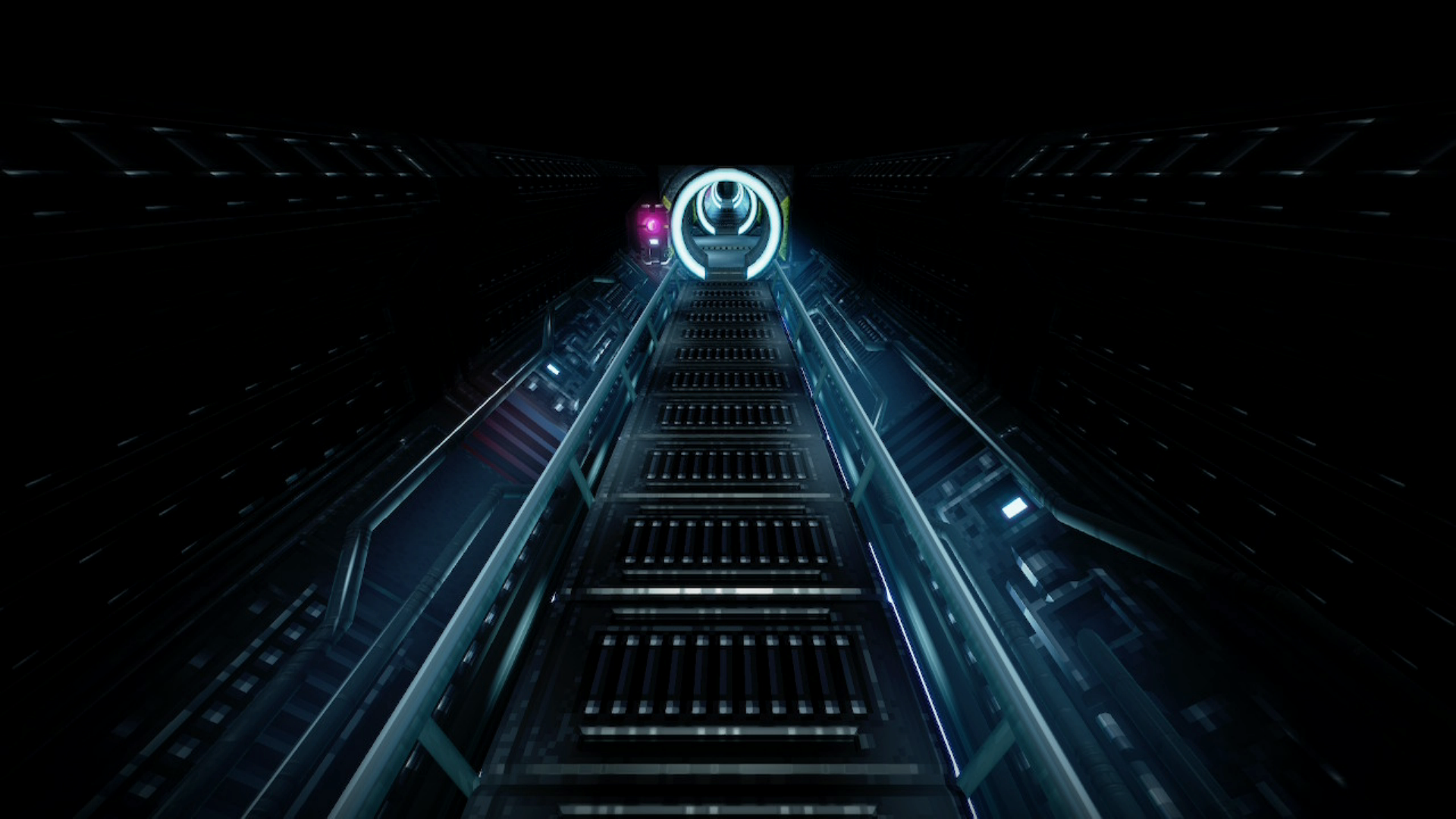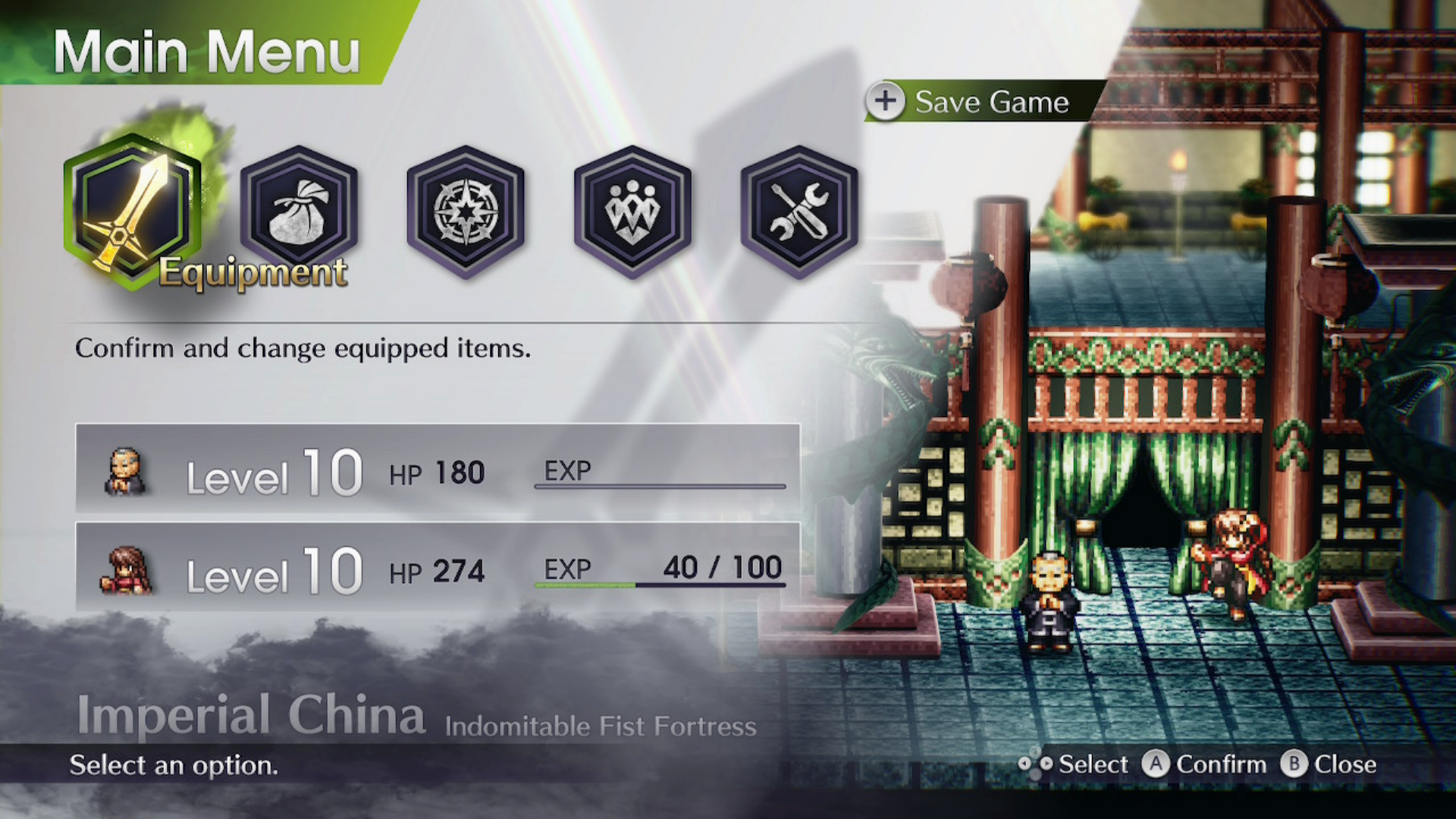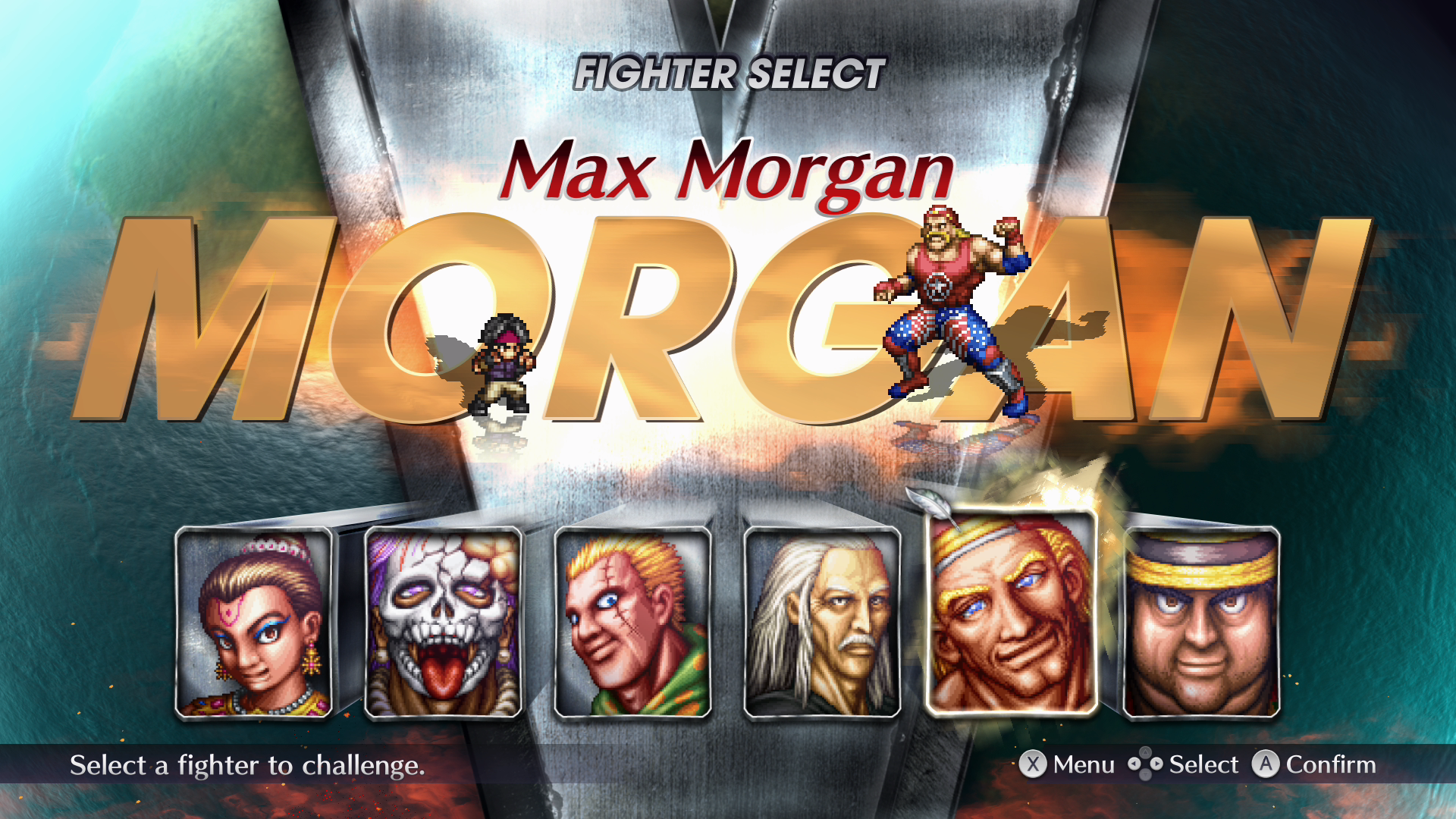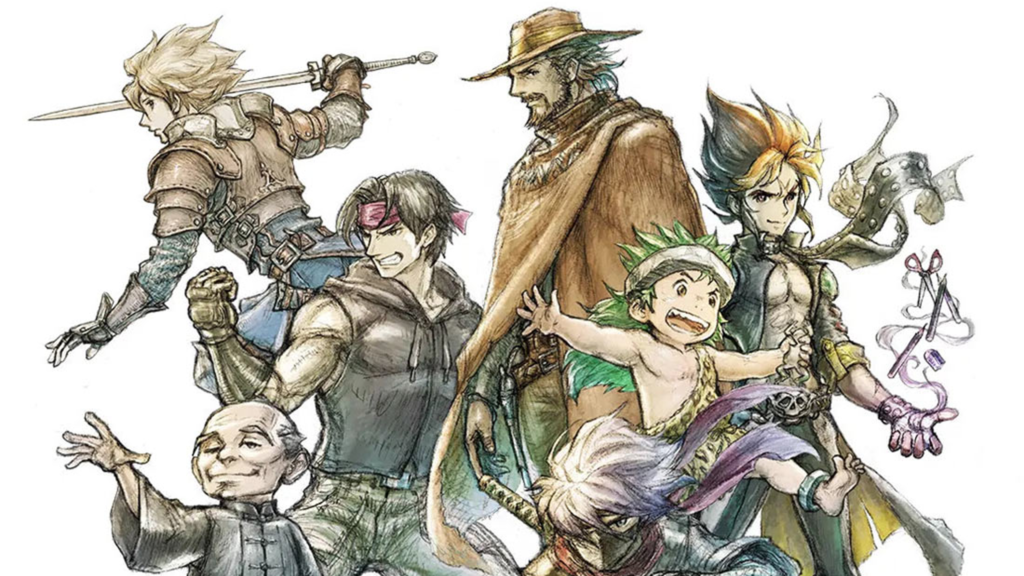At long last, it’s finally here.
Nearly 28 years later, Live A Live has finally been localized in all of its glory, wrapped up in a brand new package as one of Square’s many plans for remastering old content that missed the broader global market in years past. It’s a welcome effort considering the love and care put into it and the merit in making former media that was legally inaccessible open to a much broader demographic. Before I get into what this remaster brings to the table for fans both old and new, I’d like to address the importance of reintroducing a title like this to the current gaming era.
It’s a move that I hope pays off not only because of the legacy Live A Live represented at the time of its release but also because of what it represents now as a zeitgeist of early 90’s experimental game design in an era of gaming that feels increasingly corporatized in terms of game production. Yet because of its previous exclusivity, it’s a title that often feels neglected in the pantheon of more “influential” titles at the time such as Final Fantasy VI when it rightfully deserves its place in that upper echelon of games that redefined the genre as we know it.
Live A Live is a celebration of the JRPG genre but also an experiment in subverting its tropes and potentially serving to evolve the formula more than it represented at the time, a practice in testing the bounds and limitations of the genre’s narrative and gameplay trappings by subverting the expectations of what consumers had become so accustomed to at the time. Simply put, Live A Live is a passion project that sought to distinguish the untapped potential of both the RPG genre and the medium as a whole. However, to fully understand the unique aspects that make Live A Live a transformative work within the medium, it begins with breaking it down to its foundations in both exploring its story and gameplay.




The story of Live A Live is unique in its structure following an anthology format with a series of character episodes in stark opposition to the more traditional format that series like Final Fantasy had followed at the time with smaller arcs building up an overarching plot. Each of these vignettes follows a diverse cast of characters with their own unique settings and even respective genres they pay tribute to. It’s a fun way of spicing up episodes by constantly introducing new ideas and scenarios while the non-linear approach also makes each playthrough unique as every player will have their respective favorites but also their own personal journey through each episode sequentially.
For the sake of keeping most of the story’s surprises intact, I’ll instead give an example of the variety of genres the story tackles to give an idea of the ways the writing team flexes their narrative chops. Live A Live features stories taking place in Prehistoric times, ancient China, the Wild West, and the distant future just to name a few. While this may seem somewhat aimless in the grand context of the main narrative it becomes clear early on within the game that all these episodes have a particular element tying them together that becomes beautifully re-contextualized and explored throughout the course of the game.
I simply cannot stress how much a joy experiencing this game blind is. While I did play the original prior, the remaster does a great job at reimagining the original game through polished and dynamic visuals making it a treat for older fans as well. I really can’t say much about this game without spoiling some of the surprise other than it rewards making your own observations about its story extremely well while also balancing its tone and emotional payoff brilliantly throughout the narrative.
The gameplay however is a little more straightforward in execution but far more interesting conceptually. Live A Live takes great strides in diversifying what’s essentially a pretty simplistic battle system and makes it feel unique by re-contextualizing the idea of what each action does through the context of the episode’s respective setting.
The grid-based combat design may appear simple at first but deceptively so. There’s a large amount of creativity and challenge that goes into how the battle commands play into the settings and context of each episode. For the most part, this system works especially well with making encounters both snappy and strategic and further highlights the excellent pacing the game follows.
Where it falls flat, however, is in the final stretch of the game that unfortunately features a random encounter rate that feels exhaustive and almost grindy standing in stark contrast to the relatively light encounter rate in previous scenarios. It isn’t a large detractor considering the system itself is still enjoyable as it is but it’s weird that an issue that was present in the original wasn’t addressed here despite the multiple other quality of life changes that come with this remaster.




The most significant of these changes and also the most apparent at first glance are the visuals. While the original looked great for the time it came out despite the limitations placed on it, Square has done a great job at retooling and redesigning the way Live A Live looks creating a dynamic environment that helps greatly with the atmosphere of each respective setting and further highlights the strength of the HD-2D engine. The environments, in particular, look beautifully rendered and despite my apprehensions given my previous experience with the engine, I’m glad to say that I feel that the environments in Live A Live are beautifully recreated and feel fully realized with the new engine.
It’s also a title that features several character designs from multiple prolific manga creators resulting in a culmination of unique ideas paired with sharp visual flair that comes with working with a team full of heavy hitters like Kazuhiko Shimamoto (Blazing Transfer Student) and Gosho Aoyama (Detective Conan). This collaboration was largely due to the publishing connections Square had at the time with Shogakukan that allowed for these decisions to be possible. At the time, most JRPGs had one artist in charge of the visual direction of a project but this approach allowed for a greater variety in visual styles that complemented its episodic structure.
Another element enhancing this however is the rearranged soundtrack! As with most of my other reviews, I often take a lot of consideration into how well the soundtrack plays into the strengths of the overall experience and I’m glad to say as someone who loves the original soundtrack that these rearrangements make full use of the modern platform by breathing new life into the older tracks with the addition of new instruments and melodies that help add more to the texture of the already incredibly solid musical soundscape of Live A Live. Stand out tracks include Megalomania, Forgotten Wings, and To Arms!
Perhaps the most exciting of these improvements on top of the spruced-up visuals and lovingly recreated soundtrack is that the remaster features voice acting! Throughout my playthrough, I alternated between both voice options every other episode and the performances from both sides really helped emphasize the distinctiveness of Live A Live’s cast besides just being entertaining to listen to as well. However, the most contentious change for many with this remaster is the retooled script.
A lot of discourse has surrounded the treatment of its localization but as someone that reviewed the game with both the Japanese script in hand and constantly cross-referencing the English text in-game, I found the localization to not only be faithful to the original script but also a great way of distinguishing each character episode apart with some genuinely memorable lines.
It’s 28 years since Live A Live, and while the genre has evolved significantly and diversified immensely compared to years prior, it’s significant that an older title like this is still so refreshing today. With this rerelease proving more than worthy of being a great attempt at bringing this classic to modern audiences, it’s safe to say that I hope this lets Live A Live get the recognition it deserves.
Honestly, there isn’t really any other experience quite like it, especially within the context of both its original release and its rerelease in the current year. Despite the fact I’ve felt that the industry itself has stagnated due to the corporatization that comes with game development nowadays, it’s nice to have releases like this remind me that the medium still has so many ways to captivate audiences, that there is room still left to explore, and ultimately, that there is always a way to break out of that mold.
The better part of this whole ordeal really is just that Live A Live represents what tapping into the strengths of a genre while dipping your toes into working outside of conventions can do for the artform. Live A Live is a love letter to a genre that feels so strictly defined by tradition and the standards set by its predecessors yet by flipping the conventions of the genre it pays tribute to, Live A Live becomes an engaging experience and a refinement of the genre’s greatest strengths.
It’s a release that feels so desperately needed in an ever-changing landscape of ideas and innovation not only because it’s an important part of history within the genre but also because of the design philosophies it embodies. Defy convention, subvert expectations, and evolve beyond the constraints of tradition. Those are the values that make up the core ethos of Live A Live, and what a breath of fresh air it is all these years later.
Version Reviewed: Nintendo Switch


Recent Comments